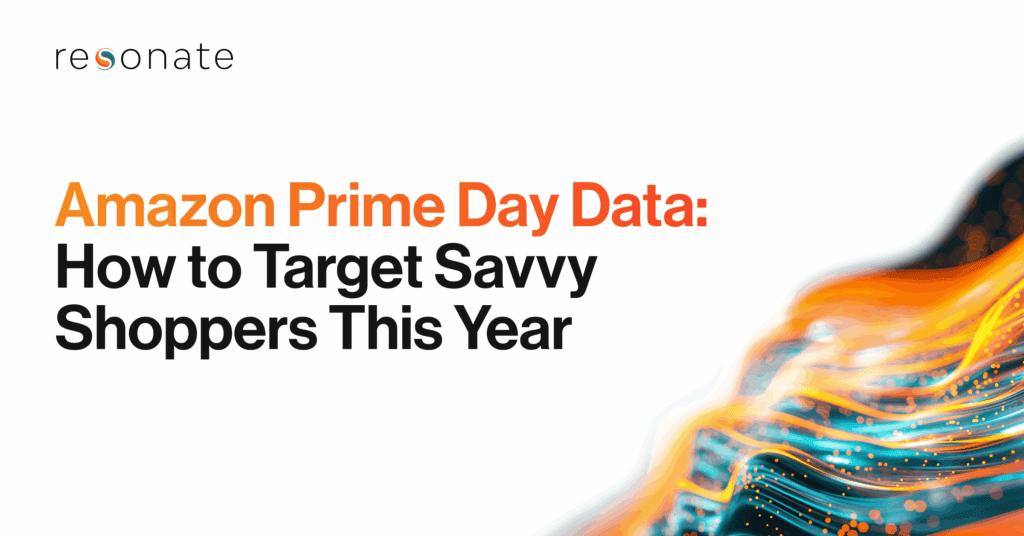When the IAB announced this year’s lineup of presenting media companies for NewFronts, observers noted not only who wasn’t there (Disney due to the timing of the 21st Century Fox acquisition), but also two first-time entrants: Walmart/VUDU and Target. These retail giants have well-known media offerings, but this move signals a greater strategic emphasis on the part of both companies to merchandise and leverage their formidable first-party data assets. They’re both doubling down on their audience and media offerings and well positioned for growth.
NewFronts is a notable event given its role as a marketplace for connecting the wealth of digital content and content creators to brands and their media and marketing agencies. Media companies use NewFronts to showcase their emerging content opportunities as well as the uniqueness of their digital audiences and the data that powers potential connections. It’s no surprise that two major retail powerhouses are stepping up to showcase their audiences and environments, but how did we get here?
Bold Moves Set the Stage
At Walmart’s annual investor meeting last October, CEO Doug McMillon said: “Our data has never been monetized and we have a tiny ad business. It could be bigger.” Now the company is looking to make good on that intention. Several years ago Walmart acquired VUDU, a streaming video services platform, similar to Netflix but positioned instead as a paid a la carte or free with advertising. The company made a series of moves earlier this year that loudly announced it’s serious about owning its advertising and analytics business. Walmart parted ways with WPP’s Triad Digital Media in February after 12+ years of partnership. Walmart took the next step to build its internal teams and firmly establish Walmart Media Group, which is taking over the sales and ad operations. And earlier this month they announced the acquisition of Polymorph Labs, giving Walmart more end-to-end ad serving capabilities and control along with self-service tools for its partners. Walmart is up to the task of truly owning an established sales strategy and approach.
Target used this year’s NewFronts to launch Roundel, its newly revamped in-house agency and media network, formerly known as Target Media Network. Over the past four years, Target built a platform that focuses on a combination of O&O on Target.com, partnerships with external media companies such as NBCU, Hearst and Pandora via its Bullseye Marketplace and other social media channels to offer marketers. Roundel will create campaigns and content for clients, namely brands and agencies, including brands that aren’t sold within Target stores. “The idea of Target not only being on the buy-side of media, but being on the sell-side of media was a real natural extension of the type of business that a retailer has the right to be in,” said Kristi Argyilan, Roundel’s President.
Walmart, Target and other major grocery chains, such as Kroger, offer marketers a significant advantage with strong purchase and loyalty data. “Many consumer product companies are looking at their marketing spending and thinking the retailers’ ecosystem might be a better place to spend it,” says Bryan Gildenberg, Chief Knowledge Officer at Kantar Consulting. Those in-house media networks will become a vital piece of retailers’ business models, Forrester predicts, as they lure clients away from established ad agencies. The bottom line is that brands like Pepsi and Coke crave this customer data and are eager to use it to deliver on target ads to potential shoppers.
Comparing Walmart and Target In-Market Beverage Shoppers
Looking at data from Resonate on these shoppers, it’s easy to see why marketers are drawn to these audiences and where Target and Walmart shoppers differ. Comparing in-store shoppers who’ve visited either Walmart or Target stores in the past three months, we see the following differences:
- Target shoppers are 15% more likely than Walmart shoppers to buy organic
- Target shoppers are 12% more likely to shop on Prime Day, and they are 9% more likely to check prices on mobile
- Walmart shoppers are slightly more likely to write a shopping list when they shop
The more brands understand the in-market shopper, the better the marketer’s messaging and creative performs. For both Target and Walmart, this also means a greater ability to increase yield from their media network assets, more potential for additional sponsorships and, perhaps most importantly, an increased likelihood to grow the size of the shopper’s basket.
When we look at the types of beverages a Target and Walmart shopper considers, it’s also helpful to know why they buy (or don’t buy), for whom they buy or for what purpose they intend to consume the product. Let’s look at three different types of products: kombucha, soda/carbonated water and sports drinks.
Target shoppers (in green) have consumed kombucha drinks in the past 30 days, slightly above Walmart shoppers (in red) and higher than the rate of the average U.S. adult consumer. Target shoppers are more likely than Walmart shoppers (and nearly 8% more likely than the average U.S. adult) to drink kombucha in the afternoon (between 12 p.m. and 5 p.m.).


When it comes to soda consumption, Target shoppers (in green) are 9% more likely than the national average to drink it several times a day and 3% more likely to have had more than 10 servings of low-calorie sodas in the last 30 days. When we look at carbonated water like LaCroix or Bubly as a subset of soda, Walmart shoppers are significantly more likely than Target shoppers to drink it first thing in the morning. Both sets of shoppers drink soda because it tastes good, and the same goes for both sets of shoppers if they don’t drink soda-it has too much sugar.





Lastly, let’s look at sports drinks. If you’re Pepsico and thirsty for more sales of Gatorade, it’s worth knowing that Target and Walmart shoppers think differently about when and why they consume sports drinks. Walmart shoppers (red) are 2% more likely than the U.S. adult consumer to drink them in the morning, but Target shoppers (green) are 31% more likely than the average consumers to drink them to stay celebrate. Target shoppers are over 20% more likely to consume sports drinks to help recover from their workout or activity.



Conclusion
Knowing that Target and Walmart are raising their advertising sales games with their recent technology investments and first-time NewFronts participation, it’s not surprising to know that many marketers eagerly await the opportunity to reach their audiences. And the notion that brands are both publishers and content creators takes on new meaning when it also involves connecting with shoppers in the most meaningful ways possible.
Learn more about how Resonate can help you get in on this new opportunity. We’re happy to show you the platform in action.



